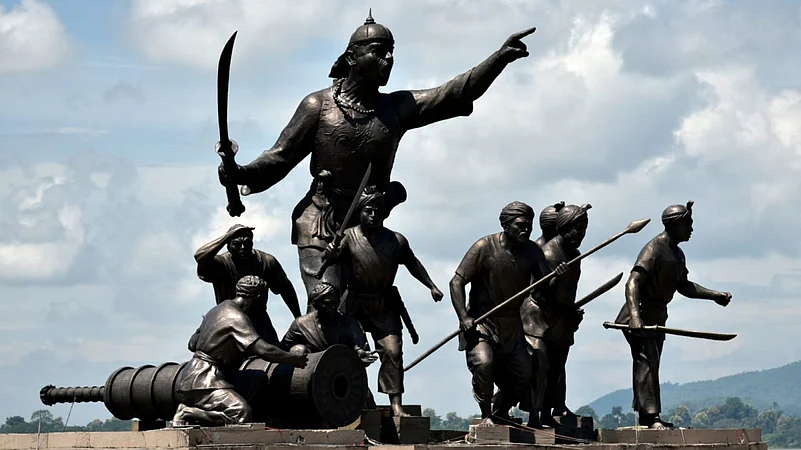The people of Assam have always had fears of being reduced to a minority in their own state. This fear was there from the time of the British Raj.
In fact, when India was portioned in 1947, Gopinath Bordoloi, the then Prime Minister (yes, he was called PM) of Assam, played a pivotal role in ensuring that the Sylhet area, which was then a part of Assam, was transferred to East Pakistan. This was because the Barak valley of Assam adjoins Sylhet, both with Bengali speaking populations. Taken together, they could have overwhelmed the Assamese speakers of the state. Bordoloi, an important Congress leader, made sure through his links with the party big-wigs in New Delhi that Sylhet be part of former East Pakistan. A referendum was held and Sylhet went to Pakistan. Identity in Assam is linked to language. Assam in the past witnessed several anti-Bengali language riots.
Advertisement
The All-Assam Student Union movement against Bangladeshi immigrants in the late 70s and early 80s was initially not so much anti-Muslim,(Assamese speaking Muslims were never targeted) as anti-foreign nationals from Bangladesh. Later it also became anti-Muslim rode on the back of exaggerated fears of Assam becoming India’s second Muslim majority state after Kashmir. This was also fueled by RSS working on the ground as well as the BJP who were then not the major forces it is now.
The agitation against foreign nationals ended with the signing of the Assam Accord in 1985, where Clause 6 spoke of "constitutional, legislative and administrative safeguards, as may be appropriate, shall be provided to protect, preserve and promote the cultural, social and linguistic identity and heritage of the Assamese people."
Advertisement
But in the mosaic that makes up the people of the state -Ahom’s, the many tribals who live in the state, upper castes that had migrated from North India, Bengali speaking people of the Barak valley, the tea garden labour, Bangladeshi immigrants, initially brought in by the British to clear the malarial plains of the Brahmaputra and turn it into fertile agricultural land. – the question remains who is an Assamese.
That question had haunted Assam since the beginning. The National Register of Citizens of 1951, as a result of that effort. The student agitation in Assam was to clean the state’s electoral rolls and ensure that only genuine citizens would-be voters. The students believed that illegal Muslim Bengali-speaking migrants from former East Pakistan were being encouraged by the ruling Congress party to come into Assam and form a solid vote bank for the party.
In the Assam Accord, the cut-off for citizenship was March 24, 1971, meaning all those who entered India from former East Pakistan before midnight of that date were accepted as Indian citizens. The rest of the Muslim Bengali speakers would be deported to Bangladesh. When the agreement between the student leaders, the state government and the centre were signed, they were given the assurance that the NRC of 1951 would be updated, to throw out all those who were not genuine citizens. But so long as the Congress and later the UPA ruled nothing moved.
The revision and update of the NRC in Assam was ordered by the Supreme Court to settle the issue of citizenship. When the final updated list of the NRC was published on August 31, 2019, the number of foreigners were found to be just 19.07 lakh, a far cry from the exaggerated figures of both the All-Assam Student Union and the BJP, which had swept the assembly elections in the state and were in power for the first time in 2016. Ever since there was a steady drumbeat by the party both in the state and centre of Assam being taken over by illegal immigrants from Bangladesh. To add to the discomfiture of the BJP, a large section was Bengali Hindus, the vote bank of the party not just in Assam, but in Tripura as well as West Bengal where state polls were due. The BJP had since the beginning of the movement against Bangladeshi influx supported the students and the people of Assam, as it fell in line with its Hindutva ideology.
Advertisement
Narendra Modi found a way out to help Hindus left out in the NRC register. It rushed through the Citizenship Amendment Act in Parliament four months later, in December 2019. The CAA would fast-track citizenship procedures for Hindus, Sikhs, Christians and Buddhist minorities from Bangladesh, Pakistan and Afghanistan. The CAA would help the Hindus left out in the final count by the NRC to be quickly granted Indian citizenship.
Not surprisingly the Assamese public was unhappy that the Bengali Hindus were to get their citizenship rights and remain in the state. For Assam its linguistic identity is more important, so a Bengali speaker whether Hindu or Muslim are an equal threat.




















